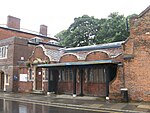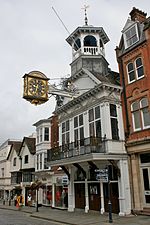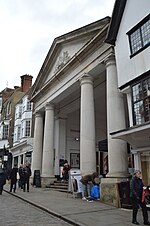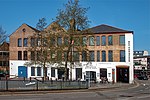Town Mill, Guildford
Buildings and structures in GuildfordFlour mills in the United KingdomGrade II listed buildings in SurreyGrinding mills in the United KingdomHistoric sites in England ... and 3 more
Use British English from March 2018Water turbinesWatermills in Surrey

The Town Mill is a Grade II listed 18th Century watermill located in the centre of Guildford on the River Wey.
Excerpt from the Wikipedia article Town Mill, Guildford (License: CC BY-SA 3.0, Authors, Images).Town Mill, Guildford
Millbrook,
Geographical coordinates (GPS) Address External links Nearby Places Show on map
Geographical coordinates (GPS)
| Latitude | Longitude |
|---|---|
| N 51.23387 ° | E -0.574848 ° |
Address
The Mill Studio
Millbrook
GU1 3AU , Guildford Park
England, United Kingdom
Open on Google Maps











